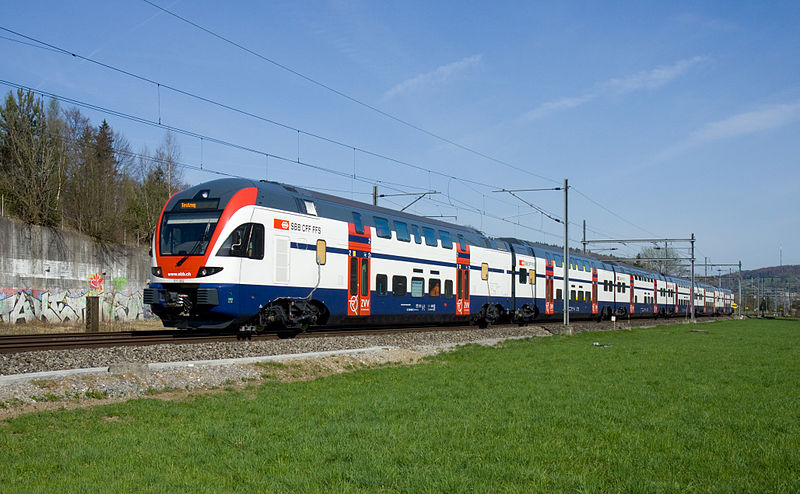Caltrain has bought itself some time — at the price of up to $20 million.
The agency announced on Monday that it had negotiated a three-month extension with the contractors responsible for the rail line’s electrification project. That gives time for Caltrain and the Peninsula to lobby the federal government for a critical $647 million grant.
San Mateo county residents and business groups are joining in an effort to save the electrification project, which would increase Caltrain’s capacity and reduce its pollution.
The Federal Transit Administration grant had been approved in the final days of the Obama administration, but awaited a Department of Transportation signature that couldn’t be given until February 17. On that day, the DOT delayed a decision on the grant, at the urging of California Republicans in congress who had asked to cut off aid to the state’s high-speed rail project. Although the grant was requested by Caltrain, the High-Speed Rail Authority also plans to use the electrified tracks for the bullet train.
Caltrain was ready to begin construction for the electrification project this week. Under the new agreement, it can give its contractors notice to proceed as late as June 30, but at a cost.
Every day the project waits in limbo, the contractors’ overhead costs will rise, according to Caltrain spokesperson Seamus Murphy. He says Caltrain could spend up to $20 million because of those delays, pulling from the project’s contingency fund.
Murphy says that if Caltrain receives the grant by June, they can complete electrification by its planned start date of 2021. But he warns that “if we don’t receive the grant, it will be starting over from square one. There’s no rock with $650 million hiding under it.”
Rosanne Foust, President and CEO of the San Mateo County Economic Development Association, is urging San Mateo residents to sign a petition for President Trump to approve Caltrain’s funding.
“We want to keep the message going towards the White House and to the Secretary of Transportation that this is a vital service,” says Foust. “It connects the innovation economy; it’s environmentally friendly.”
Foust started a hashtag for fans of the project: #StandWithCaltrain.
“This is a really solid project that’s ready to go,” says Foust, “so we encourage the administration to put aside the political rhetoric that is surrounding this and look at the merits.”
Facebook, Oracle, and Electronic Arts are all headquartered near Caltrain stops. Caltrain’s ridership has doubled in the past decade, and now exceeds 60,000 riders daily.
Beyond serving commuters in a region that has become choked with cars, the Caltrain electrification project would create engineering and construction jobs in San Mateo County.
Carl Guardino, President and CEO of the Silicon Valley Leadership Group (SVLG), says that the region served by Caltrain represents 14 percent of California’s gross domestic product, and 43 percent of all venture capital investment in the US.
The electrification project “is critical to the success of Silicon Valley,” says Guardino, “which of course is critical to the United State's economy.”
Representatives of the SVLG and Caltrain will both fly to Washington this month, and Caltrain will top the agenda.
Seamus Murphy, of Caltrain, says they’ve scheduled over sixty meetings to lobby federal officials, including Transportation Secretary Elaine Chao.
San Mateo’s elected representatives have fallen in line.
Rep. Jackie Speier (D-San Mateo) said in a statement that “this decision to delay would threaten to break the backbone of this economy. To make America great again, the President should order that this grant be made and then join us to turn dirt as 9,600 good American jobs related to this project—spread over thirteen states—are created.”
Joe Beckner, a San Mateo County resident and business owner, says he doesn’t often make calls to politicians. But he called up the office of Rep. Kevin McCarthy (R-Bakersfield), who signed the letter requesting the grant’s delay.
“I just think it was totally political,” says Beckner, who has lived in San Mateo county for 30 years.
In an op-ed for the San Mateo Daily Journal, former San Mateo County Supervisor Tom Huening argues that if the federal government pulls out of the Caltrain project, tech companies could provide some “angel funding.”
“How about help from the companies most needing to get their folks to work and continue to grow,” asks Huening, who also served on the SamTrans board of directors. Tech companies “bring the jobs and economic growth but also create traffic congestion.”
Huening suggests a half-cent sales tax “matched by an equal, large employer payroll tax.”
Another option, proposed by Joseph Baylock of the blog the Burlingame Voice: Caltrain should receive electrification funding after divorcing itself from high-speed rail plans. He’s started his own White House petition.
But the High-Speed Rail Authority is also providing $713 million dollars to Caltrain’s $2 billion project.
Carl Guardino, of the Silicon Valley Leadership Group, remains optimistic that electrification will go forward.
“In Silicon Valley we've learned long ago as innovators that if a door is closed, you check the window,” says Guardino. “So we absolutely don't give up.”






